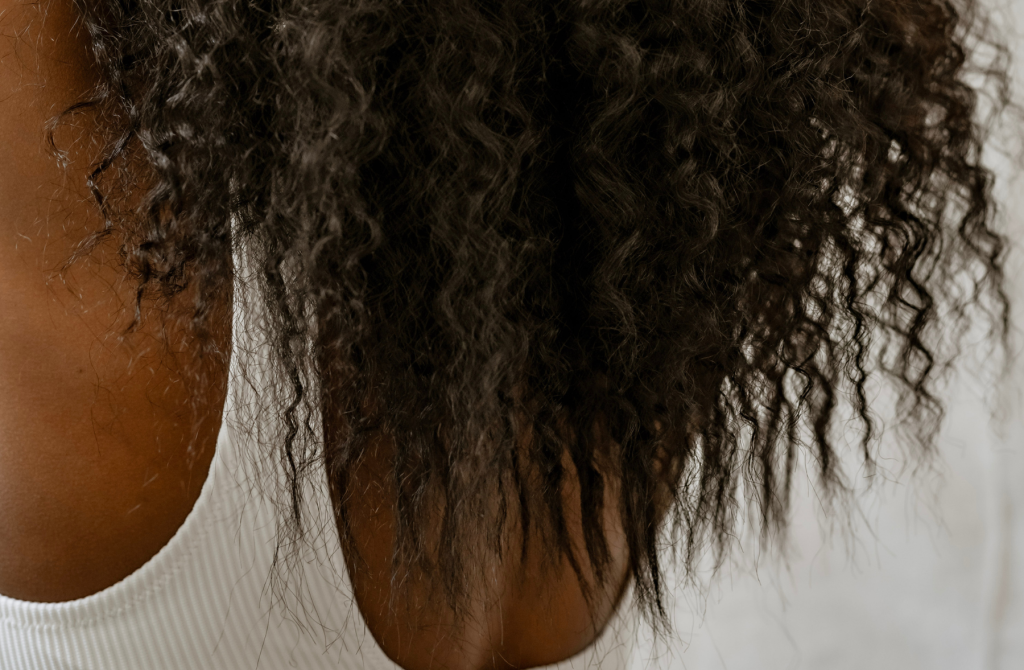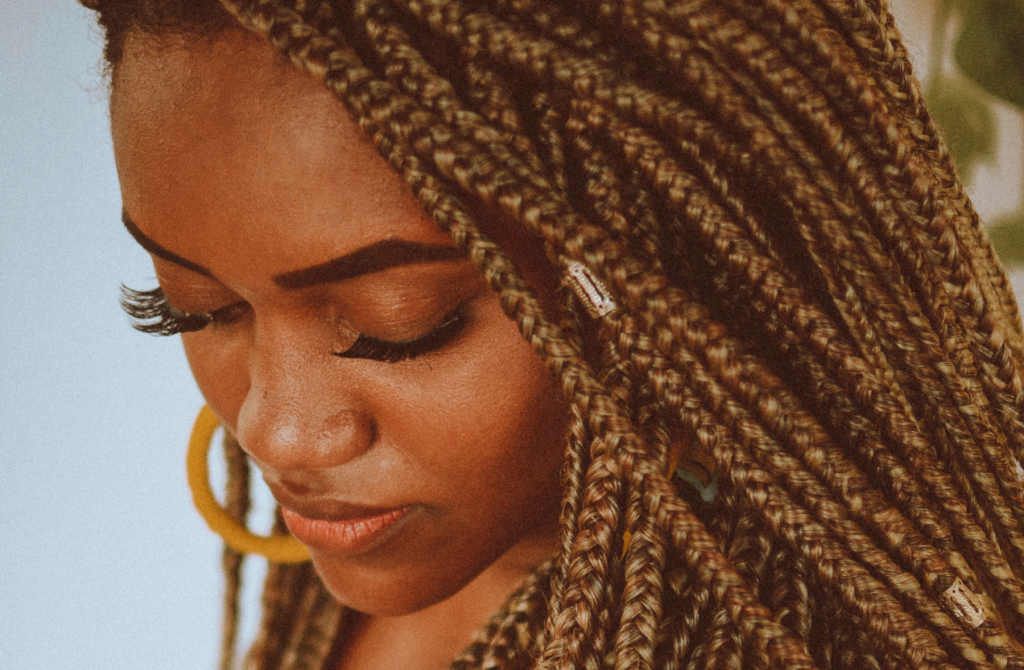It can be concerning when you run your fingers through your hair and notice strands falling out. Hair loss is a common issue that affects people of all ages, genders, and backgrounds. Whether you’re finding lots of strands in the shower drain or noticing thinning patches, understanding the science of hair loss can help you navigate this often distressing experience.
Hair loss can be caused by hormones, genetics, diet, stress, or styling habits, and for those with curly or natural hair, additional factors like shrinkage and breakage can make it harder to recognise hair loss early. The good news? There are solutions - but they start with knowledge.
In this guide, we’ll explore:
- The science of hair loss and why it happens
- The hair growth cycle and how it affects shedding
- The key factors that contribute to curly and natural hair loss
- Actionable solutions to strengthen, regrow, and protect your strands
By understanding the root causes, you can take proactive steps to regain control of your hair health. Let’s start with the basics - what exactly is hair loss?
What is hair loss? Understanding the basics
Hair loss, also known as alopecia, is the partial or complete loss of hair from areas where it usually grows. It can affect the scalp, eyebrows, eyelashes, or other body parts, and may be temporary or permanent. While some hair loss is normal, excessive shedding can be a sign that something is wrong.
Different types of hair Llss
- Androgenetic Alopecia (Genetic Hair Loss): Commonly known as male-pattern baldness or female-pattern hair loss, this type is inherited and caused by sensitivity to dihydrotestosterone (DHT), a hormone that shrinks hair follicles over time.
- Alopecia Areata: An autoimmune disorder where the body mistakenly attacks its own hair follicles, causing patchy bald spots.
- Telogen Effluvium: A temporary condition where hair enters the shedding phase too early, often triggered by stress, illness, or nutritional deficiencies.
- Traction Alopecia: Caused by tight hairstyles, excessive tension, and styling habits that weaken the hairline and scalp.
- Cicatricial Alopecia: Also called scarring alopecia, this condition destroys hair follicles permanently due to inflammation or scalp damage.
Understanding which type of hair loss you’re experiencing is key to choosing the right solutions. Next, let’s break down the hair growth cycle to understand how shedding occurs.
The hair growth cycle: How hair naturally sheds
Before we dive into the causes of hair loss, it’s important to understand how hair naturally grows and sheds. Hair doesn’t grow continuously - it follows a cycle, which consists of three main phases:
- Anagen Phase (Growth Phase): This is the active growth stage, where the hair follicle produces new strands. It lasts anywhere from 2 to 7 years, depending on genetics. Around 85–90% of the hair on your head is in this phase at any time.
- Catagen Phase (Transition Phase): This is a brief 2–3 week stage where the hair follicle shrinks and prepares for shedding. Hair growth slows, and the strand detaches from its blood supply.
- Telogen Phase (Resting & Shedding Phase): This 3-month stage allows the hair follicle to rest before shedding. 10–15% of your hair is in this phase at any given time. Once the hair falls out, the cycle repeats.
For those with curly or natural hair, it’s common to feel like your hair isn’t growing as fast as straight hair. However, this is often due to shrinkage, not an actual lack of growth. But if you’re losing more hair than usual, the hair cycle might be disrupted—let’s explore why.
The science of hair loss: Common causes
Hair loss isn’t just about what happens on the surface- it’s a result of internal and external factors. Here are the main causes that lead to excessive shedding:
| Cause | Description |
|---|---|
| Genetics & hormones |
|
| Nutritional deficiencies |
|
| Medical conditions & medications |
|
| Styling practices & hair damage |
|
| Stress & lifestyle factors |
|
How to treat and prevent hair loss
If you’re experiencing hair loss, don’t panic - there are ways to stop shedding and encourage regrowth. Here’s what you can do:
| Solution | Details |
|---|---|
| Strengthen from within |
|
| Improve scalp health |
|
| Reduce tension & damage |
|
Get professional help if needed
- Minoxidil (Rogaine): A topical treatment that stimulates regrowth.
- PRP therapy or laser treatments: Helps strengthen hair follicles.
- A dermatologist or trichologist can diagnose and tailor treatments to your needs.
Alternative therapies for hair loss
While scientific evidence is limited, some alternative therapies may help improve hair growth. These methods should complement—not replace—medical treatment.
- Acupuncture: May improve blood circulation to the scalp.
- Herbal remedies (e.g., saw palmetto, ginseng): May help block DHT.
- Scalp massage: Stimulates blood flow to hair follicles.
If you’re considering alternative therapies, consult a healthcare professional before making changes to your routine.
Psychological impact of hair loss
Hair loss can be emotionally distressing. Many people experience low self-esteem, anxiety, or depression due to changes in their hair. If you’re struggling with hair loss, consider:
- Speaking to a therapist or joining a support group.
- Focusing on self-care and confidence-building activities.
- Exploring different hairstyling options, wigs, or head coverings.
Remember, hair loss does not define you. Seeking support can help you manage the emotional impact.
Preventing and managing hair loss: Tips and Strategies
While hair loss isn’t always preventable, adopting a healthy haircare routine can reduce excessive shedding. Here are some key tips:
- Maintain a balanced diet: Eat fruits, vegetables, lean proteins, and healthy fats.
- Manage stress: Try mindfulness, meditation, yoga, or deep breathing exercises.
- Protect from sun damage: Wear a hat or use a UV-protective hair spray.
- Avoid harsh hairstyling practices: Reduce heat styling, avoid tight styles, and use gentle accessories.
- Consult a healthcare professional: If you notice excessive shedding, seek expert advice.
- Be patient and consistent: Hair regrowth takes time, so stick to your routine.
Take control of your hair health
Hair loss can be frustrating, but understanding the science behind it gives you the power to take action. Whether it’s changing your diet, improving scalp care, or adjusting styling habits, small tweaks can lead to big improvements.
Key takeaways:
- Hair loss can result from genetics, hormones, diet, stress, or hairstyling habits.
- The hair growth cycle consists of growth, transition, and shedding phases.
- Nutrition, scalp care, and protective styling can support healthy hair growth.
- For persistent hair loss, seek professional help from a trichologist or dermatologist.
By taking a proactive approach, you can protect, strengthen, and regrow your hair—one step at a time.
Know someone going through it? Send them this guide.
Want more haircare tips? Check out our latest articles on natural hair maintenance.




